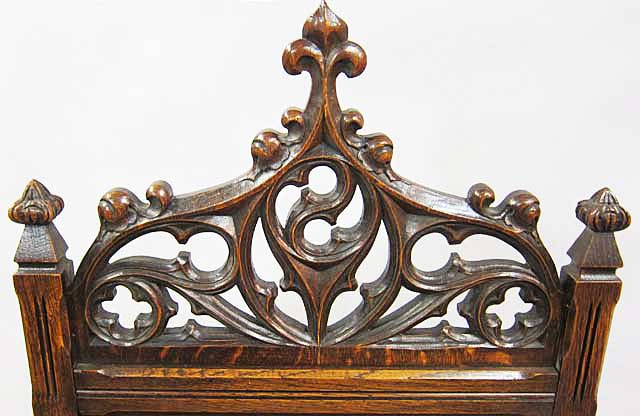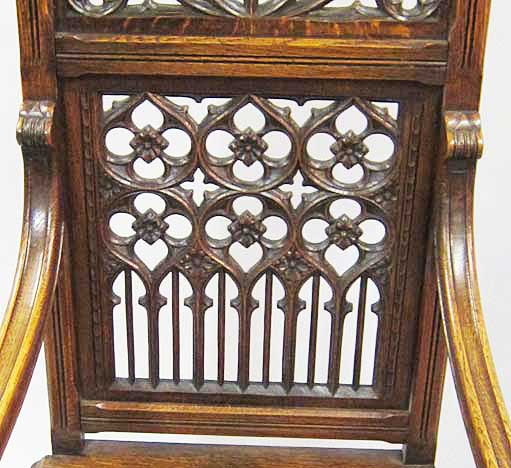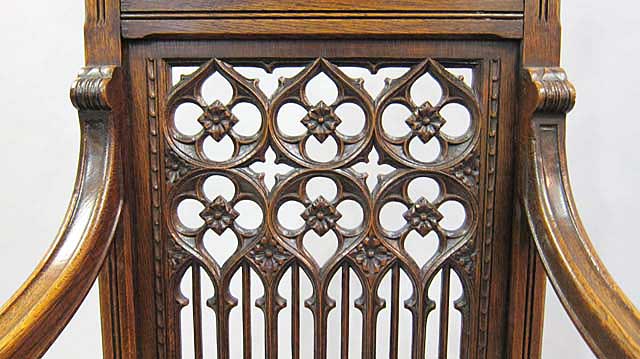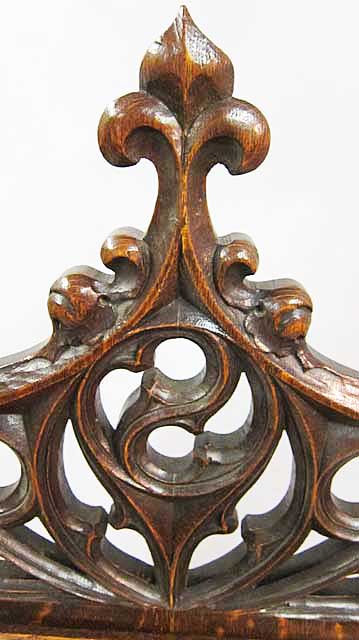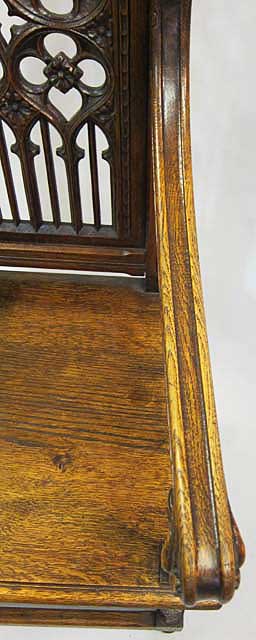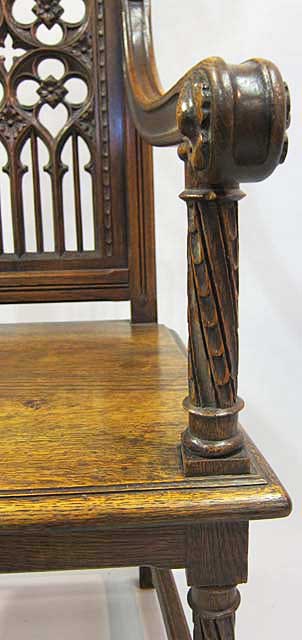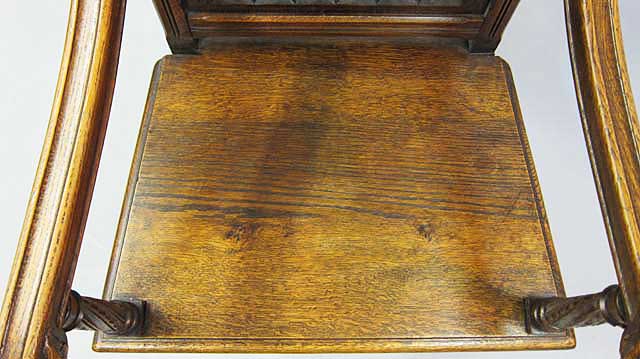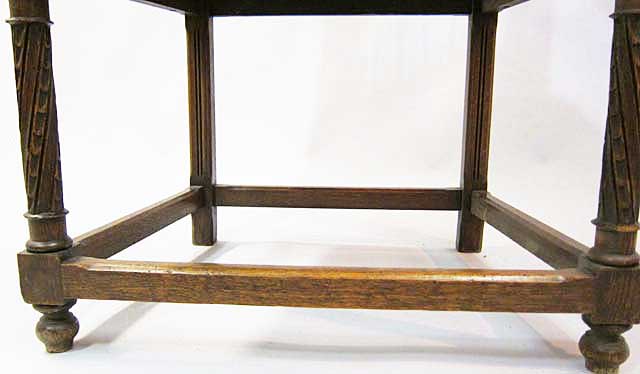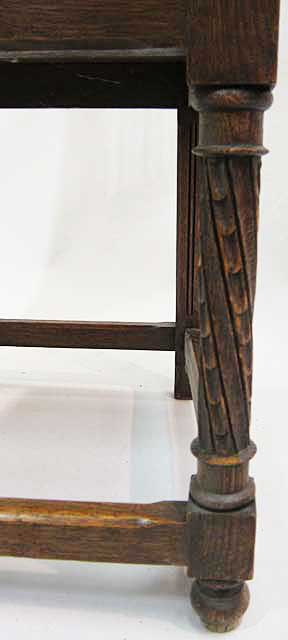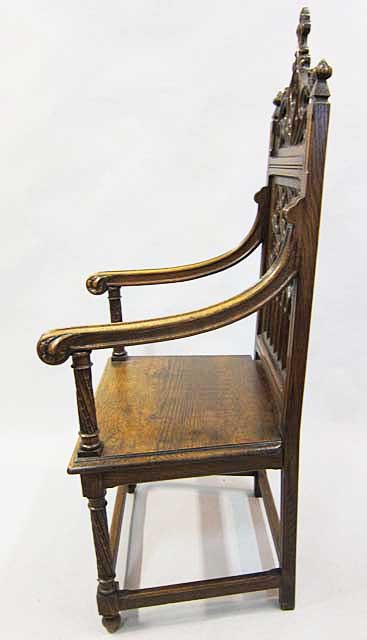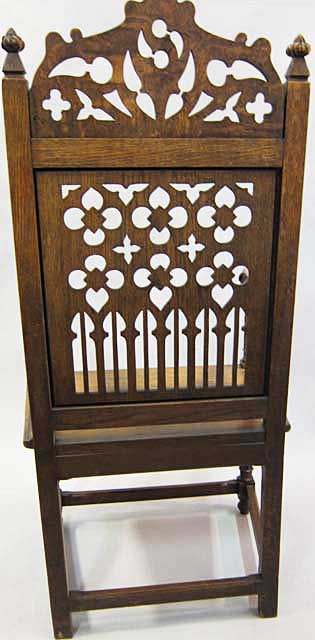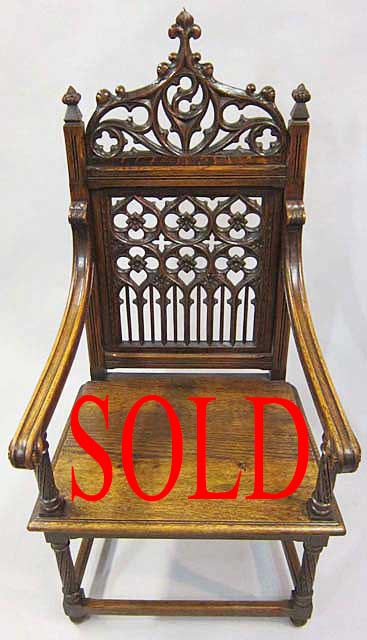
Armchairs sporting open tracery for their back panels have become increasingly rare and are seen more often in dining chairs (without arms).
Starting at the top, this chair is crowned by an intricately carved fleur-de-lys representing the so-called flamboyant style of Gothic architecture whose ogee (S-shaped) arch it terminates. The term flamboyant in English can be used to describe this style as elaborate, perhaps "over the top," but in French it traces its significance to an archaic word for "flame" (flambe) since the arches often terminated in a pointed figure evoking a candle's flame. In many examples of 19th century furniture, such as this chair, the flame has given way to the royal symbol of France, the fleur-de-lys.
The arch itself is ornamented with crocketing or stylized acanthus leaves that are partially unfurled. Within the arch is a fine example of open tracery or fenestrage used to fill it and involving several typical elements of Gothic architecture. The quatrefoil, framed within a circle, marks each end of the base of the arch. Dominant is the mouchette, a graceful figure that is wide at one end and tapers to a point at the other while curving gently. Within the space of this arch, the mouchettes act as stand-alone elements appearing to emerge out of the quatrefoils at either end. Two smaller mouchettes appear in the circle just below the top of the arch, arranged as a sort of "yin and yang" symbol dividing the circle into to parts. Framing the circle and extending below it are mouchettes demarcated into two lobes and tapering to a point at either end with a slight curve.
The main part of the chair's back, below the ogee arch, is a rectangular panel reflecting typical Gothic design in the form of a row of tall, slim lancet arches supporting elements based on the quatrefoil and the rosette. Understanding the upper part of the panel requires envisioning the two rows of quatrefoils folded lengthwise. When opened out, the two rows of quatrefoils are mirror images of one another. This is because the basic quatrefoil figure is modified by one lobe that is pointed, along with the circle in which it sits. On the top row, the point is upward and on the bottom row it is downward.
At the center of the modified quatrefoils is a rosette or flower pattern typically used to fill space, as it does between pairs of lancet arches in the lower section of the panel. Between the two rows of three quatrefoils each are two open, four-sided figures resembling quatrefoils in which all four lobes have been extended to points. Again using the analogy of a lengthwise crease, these open figures are enlarged and sliced in half to fill the spaces between the upper horizontal edge of the panel and the upper row of quatrefoils.
Other aspects of Gothic architecture are found in the vertical support for the armrest and in the front legs of this chair. Both make use of a diagonal design with overlapping tabs running from top to bottom as on the columns in Gothic cathedrals.
Even when viewed from behind, as shown in the last photo, below, this chair reflects the pleasing symmetry of Gothic design.
The most representative color, given the challenges of photographing dark furniture, is in the image at the top of this page.
Reference
Ader-Tajan, Collection Bruno Perrier Haute Epoque (Catalog for Sale at Auction on April 6, 1992 at the Hôtel Drouot, Paris); Boccador, Jacqueline, Le Mobilier Français du Moyen Age à la Renaissance (Editions d'Art Monelle Hayot, Saint-Just-en-Chaussée, 1988); Thirion, Jacques, Le Mobilier du Moyen Age et de la Renaissance en France (Editions Faton, Dijon, 1998); Viollet-le-Duc, Eugène, Le Mobilier Médiéval (Georges Bernage, editor) (Editions Heimdal, 2003) .
Uses
This armchair would lend grace and authority at the head of an oak Gothic dining table such as item 5209 and could be combined with oak Gothic dining chairs (such as item 5208).
